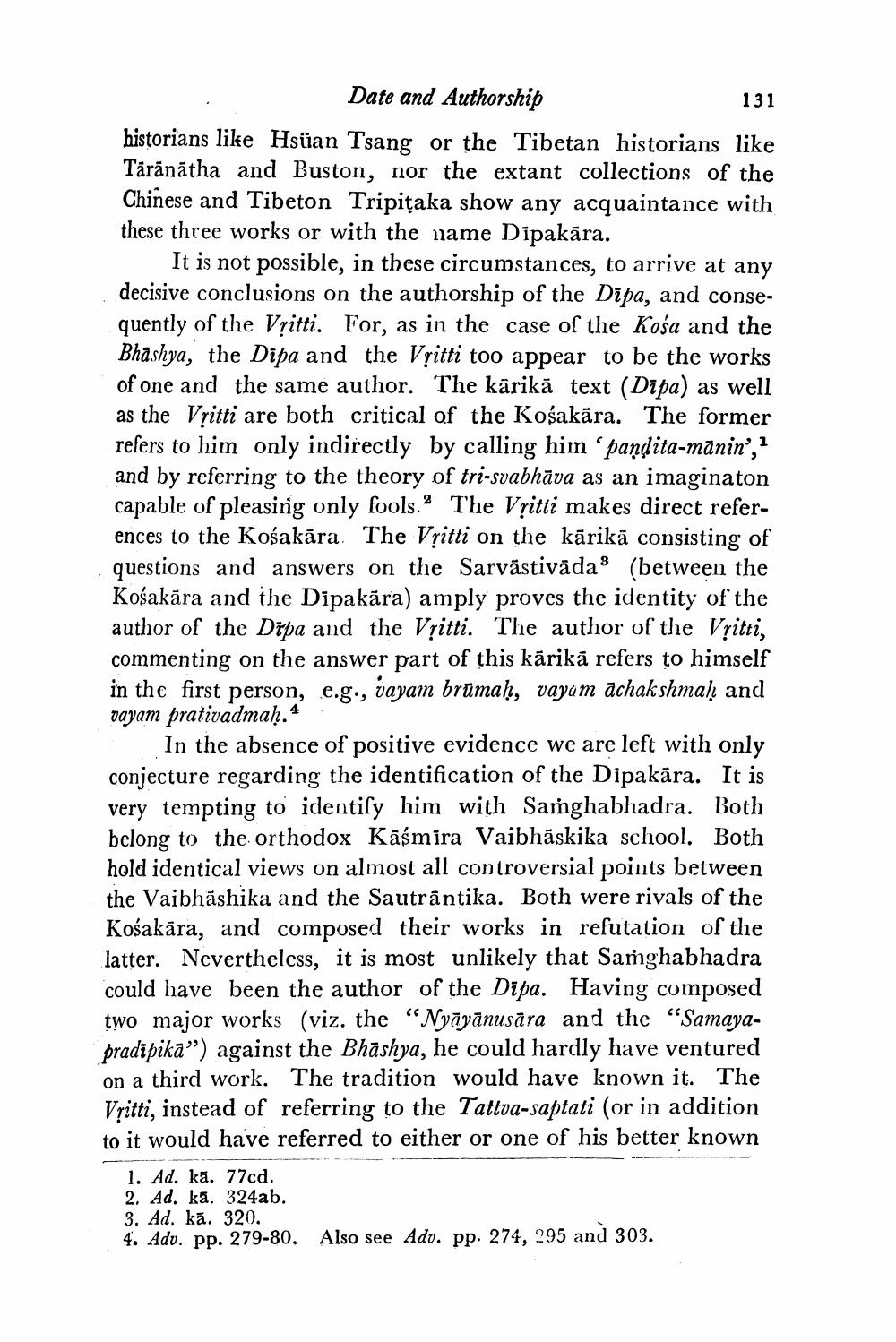________________ Date and Authorship 131 historians like Hsuan Tsang or the Tibetan historians like Taranatha and Buston, nor the extant collections of the Chinese and Tibeton Tripitaka show any acquaintance with these three works or with the name Dipakara. It is not possible, in these circumstances, to arrive at any decisive conclusions on the authorship of the Dipa, and consequently of the VIitti. For, as in the case of the Kosa and the Bhashya, the Dipa and the Vritti too appear to be the works of one and the same author. The karika text (Dipa) as well as the Vritti are both critical of the Kosakara. The former refers to him only indirectly by calling himn 'pandita-manin', 1 and by referring to the theory of tri-svabhava as an imaginaton capable of pleasing only fools.2 The VIitli makes direct references to the Kosakara. The Vaitti on the karika consisting of questions and answers on the Sarvastivada(r) (between the Kosakara and the Dipakara) amply proves the identity of the author of the Depa and the Vtitti. The author of the Vritti, commenting on the answer part of this karika refers to himself in the first person, e.g., vayam brumah, vayam achakshmah and vayam prativadmah. 4. In the absence of positive evidence we are left with only conjecture regarding the identification of the Dipakara. It is very tempting to identify him with Samghabhadra. Both belong to the orthodox Kasmira Vaibhaskika school. Both hold identical views on almost all controversial points between the Vaibhashika and the Sautrantika. Both were rivals of the Kosakara, and composed their works in refutation of the latter. Nevertheless, it is most unlikely that Samghabhadra could have been the author of the Dipa. Having composed two major works (viz. the "Nyayanusara and the "Samayapradipika") against the Bhashya, he could hardly have ventured on a third work. The tradition would have known it. The Vritti, instead of referring to the Tattva-saptati (or in addition to it would have referred to either or one of his better known 1. Ad. ka. 77cd. 2. Ad. ka. 324ab. 3. Ad. ka. 320. 4. Adv. pp. 279-80. Also see Adv. pp. 274, 295 and 303.




